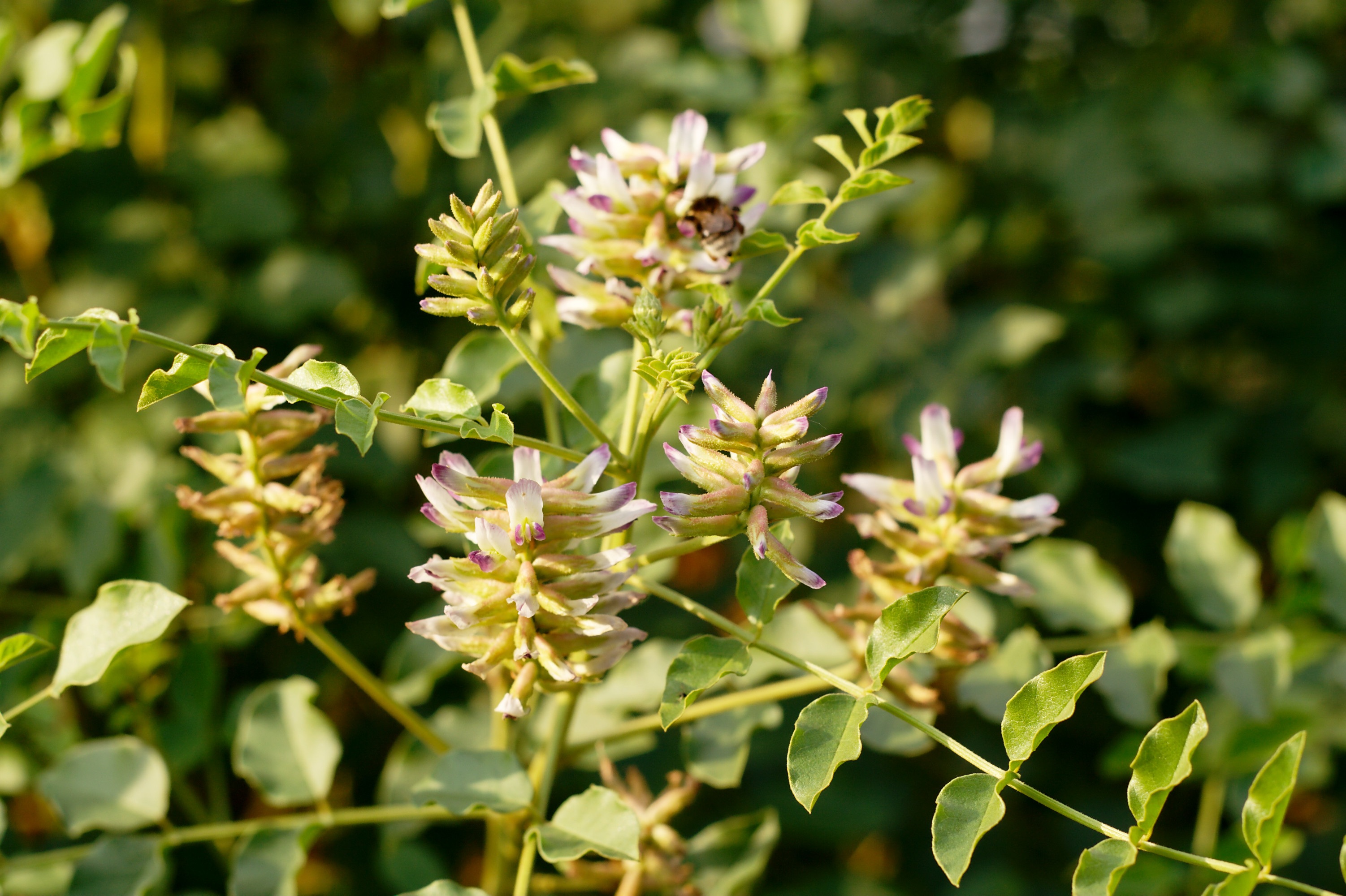Wild Licorice
Glycyrrhiza lepidota, commonly known as Wild Licorice, is a perennial herbaceous plant native to parts of North America, including regions of Alberta. Unlike its European counterpart, which is typically used in candy production, Wild Licorice boasts a range of traditional medicinal uses and a distinct flavor profile. This plant, with its sweet-tasting roots and appealing, pinnately compound leaves, thrives in the prairies and valleys of Alberta, blending seamlessly into the province's rich biodiversity.

More on Wild Licorice
About
Wild Licorice stands out with its elongated, pinnately compound leaves and bean-like pods. In Alberta's prairies and river valleys, these plants can often be spotted growing in dense colonies, thanks to their spreading rhizomes which allow them to propagate efficiently. When mature, the plant's roots take on a woody texture and exude a characteristic sweet taste, attributed to the compound glycyrrhizin.
While not commercially cultivated on a large scale in Alberta, Wild Licorice is a cherished native plant that often garners attention from local herbalists and indigenous communities. Unlike European Licorice (Glycyrrhiza glabra), which is cultivated extensively for confectionery use, Glycyrrhiza lepidota grows wild, often alongside streams, in meadows, and other moist environments. Its adaptability and hardiness make it resilient against Alberta's varied weather patterns.
History
Historically, Wild Licorice's roots have been integral to indigenous communities in Alberta and other parts of Canada. Recognizing its sweet flavor and potential health benefits, indigenous groups have employed it as a medicinal herb for centuries. Traditional uses encompassed remedies for ailments like coughs, digestive problems, and infections. The roots were sometimes chewed raw for their sweet taste, acting as a natural candy substitute.
Beyond indigenous practices, settlers and early inhabitants also discovered the value of this herb, integrating it into their repertoire of natural remedies. While it never gained the commercial prominence of European Licorice, its contribution to traditional medicine and local gastronomy in Alberta cannot be overlooked.
Ways To Cook
Preparing Wild Licorice for culinary or medicinal purposes requires a gentle touch to preserve its delicate flavors and potential benefits:
- Raw Consumption: The roots can be washed, peeled, and chewed directly. They release a sweet taste, offering a natural alternative to candies.
- Decoction: Boiling the roots gently in water can produce a licorice-infused beverage, often sweetened further with honey.
- Drying: Roots can be cleaned, sliced, and dried for long-term storage. Once dried, they can be ground into a powder for various culinary applications.
- Tinctures: Combining the root with a high-proof alcohol can create a tincture, which can be used medicinally in small doses.
- Infused Oils: The root's aromatic compounds can be infused into oils for culinary or therapeutic uses.
- Herbal Teas: Dried roots can be steeped in hot water, either alone or combined with other herbs, to produce a soothing beverage.
- Syrups: A concentrated decoction can be combined with sugar to produce a sweet syrup, which can be used in beverages or desserts.
Always remember, when foraging for Wild Licorice or any wild plant in Alberta, proper identification is crucial to avoid consuming potentially harmful species. It's also essential to source the plant sustainably, ensuring that enough remains for it to continue its growth cycle.
